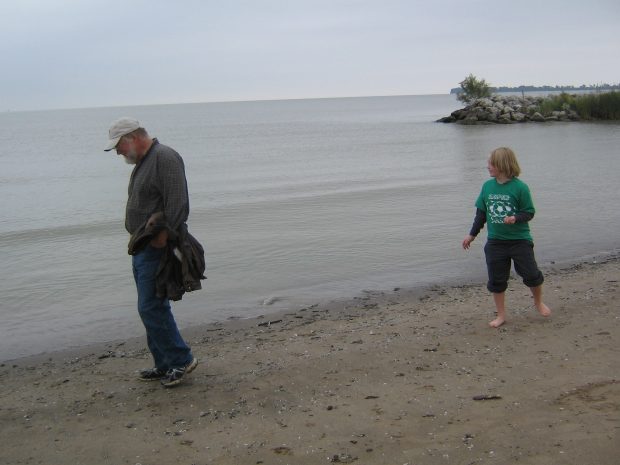3 July 2016
Lake Erie Watershed Soil Phosphorus Study Shows Glyphosate Link
Posted by John Freeland

Maumee Bay, Toledo, Ohio (May 2010)
As reported recently by Laura Barrera in the magazine No-Till Farmer, a study led by Ohio Northern University chemistry professor Christopher Spiese links the popular herbicide glyphosate to dissolved reactive phosphorus (DRP) desorption in soils. Mobilization and runoff of phosphorus to streams and lakes is associated with toxic algae blooms in Lake Erie and the Gulf of Mexico Dead Zone.
For decades, soil scientists have understood phosphorus to form low-solubility compounds or to be tightly bound to soil particles. To control phosphorus, it was important to reduce soil erosion. Control erosion and we could control phosphorus runoff. Here is an example of this well-worn but, in my opinion, somewhat outdated understanding from PennState Extension:
Phosphorus is not lost into the atmosphere—rarely does it leach beyond the reach of roots…The concentration of soluble phosphate in the soil solution is very low, and phosphorus is relatively immobile in the soil…Because phosphorus is very immobile in the soil, it does not move very far in the soil to get to the roots. Diffusion to the root is only about 1/8 of an inch per year, and relatively little phosphorus in soil is within that distance of a root.
To the contrary, recent studies (1, 2, 3, 4, 5) indicate significant leaching of phosphorus from agricultural fields. The Agronomy Society of America reports here:
It’s been largely ignored in the past as a route for phosphorus loss from farms, but the buried network of drainage pipes known as the tile system can carry away as much phosphorus as surface runoff.
A subsurface mechanism for phosphate transport is now well documented. Any conditions in the soil that would make phosphorus more mobile, such as a chemical that would loosen soil’s tight grip on phosphorus, would set up a situation for off-site losses of phosphorus. The Spiese study presents evidence that glyphosate does just that in some, but not all soils. According to Spiese, as quoted by No Till Farmer:
“For every acre of Roundup Ready corn and soybeans that you plant, it’s about one-third pound of phosphorus coming down the Maumee (River)…”
Glyphosate has been in use since 1974. Now, after more than 40 years, we’re still learning of its role in the environment.


 John Freeland earned a PhD in Soil Science (Pedology) at North Dakota State University and is a consultant working in the private sector. He has published soils research and taught at the high school and college levels. John is interested in wetlands, soil genesis, science communication, the intersection of art and science, and soil-water-landscape processes. John lives near the Ohio-Michigan border and plays bass in multiple music projects.
John Freeland earned a PhD in Soil Science (Pedology) at North Dakota State University and is a consultant working in the private sector. He has published soils research and taught at the high school and college levels. John is interested in wetlands, soil genesis, science communication, the intersection of art and science, and soil-water-landscape processes. John lives near the Ohio-Michigan border and plays bass in multiple music projects.
[…] American Geophysical Union […]